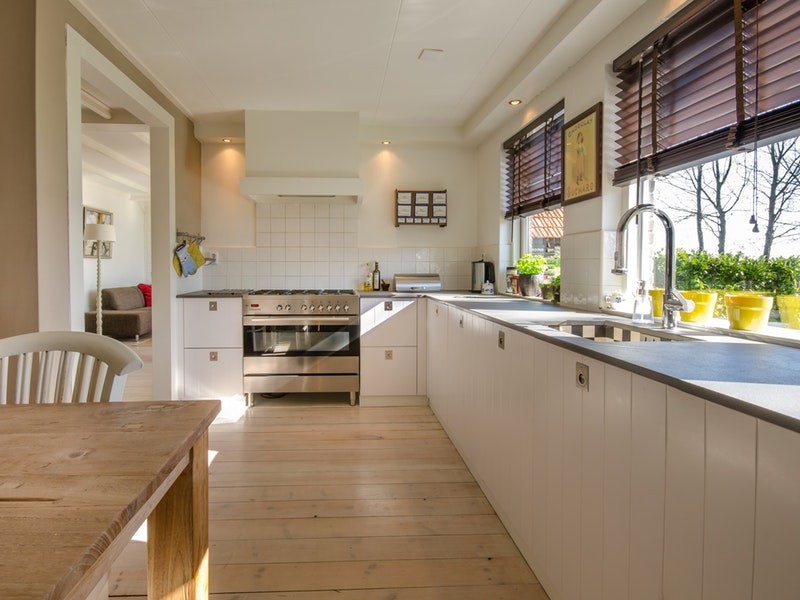When it comes to the environment, every small shift causes an effect throughout nature. In the same way, changing the elements in your home can alter the feel of each day, as well as the impact your home has on the world. Why not promote a healthier environment in a space where the benefits will be immediately felt? There are many things a homeowner can do to significantly affect the carbon footprint of their household and it doesn’t take a whole lot to get started.
- Perform Basic Maintenance
Do not underestimate the power of simple home maintenance as an eco-friendly measure. Sealing cracks in your home foundation and walls can save you big bucks in the future. On a regular schedule, check the condition of your most important appliances for damages, leaks, or blockages. Regularly check your roof and HVAC system for dirty filters and examine gutters for clogs. Simply observing works wonders for the eco-friendly homeowner.
2. Decrease Your Water Flow Rate
Water is expensive, but it’s easy to conserve when you are mindful. Even better — there are plenty of ways to save it. Our easiest tip? Replace old bathroom and kitchen faucets with new models that decrease your water flow rate. Not only does this save money on water consumption, it decreases demand on your water heater, prolonging its lifespan. Even small updates can have large impacts on your daily consumption.
3. Install a Drying Line
If you happen to live in a warmer climate, hang-drying clothes is an easy way to reduce water and energy consumption. Although hanging your clothes to dry may seem like a return to a bygone era, there are definitely perks. Your fabric feels softer and will pick up that fresh air scent. Not much outdoor space? Installing an indoor line is simple and lengthens the life of your dryer, even if you don’t use the line every day. There is something quite mindful about taking the time to put your clothes on a peg and hanging them to dry.
4. Be Smart About Heating
Inconsistent home heating can have an impact on your monthly budget during colder times of the year. It’s easy to leave heat running when you don’t need to, which can be wasteful to the earth and your pocketbook. It doesn’t take much to upgrade. Homeowners can opt for an automatic heating system with a timer that changes your home temperature according to your daily use. Even better, smart thermostats can allow you to control your heating from anywhere — and it doesn’t cost much to upgrade compared to savings.
5. Expand Your Greenspace
Does your yard need a makeover? Perfect! Expanding the greenery around your home can add value and beauty to your property. Planting an extra tree or two, or putting in an edible garden makes your yard useful. Even if you don’t have much extra room, trendy ideas such as a pallet garden do wonders in urban areas and they are cheap and easy to do yourself!
7. Consider New Doors and Windows
If you’re lucky enough to reside in an older home, your windows may be in desperate need of an upgrade. Why pay for heating that quickly escapes the less-insulated parts of your home? Putting in new windows or opting for a denser doorway could help you cut costs and be eco-friendly. Not ready to splurge? Check the perimeter of windows and add sealant from time to time if you notice any cracks or breeze coming through in one area.
8. Use Energy Efficient Appliances
Speaking of laundry, one of our best tips for switching to an eco-friendly homespace is to upgrade your appliances. Huge advances in efficiency have been made in appliances over the past decade. If you happen to live in an older home with inherited appliances, this could be the perfect time to upgrade to something a bit more energy efficient. Look for ENERGY STAR appliances. Depending on where you reside, you may even be able to claim your upgrade on your next tax return through energy credits.
Being green at home isn’t as hard as you may think, and there are so many innovative solutions available that can help the cause. Sometimes going more eco-friendly is as simple as choosing one or two areas you can impact without completely overhauling your entire space. Your family and the earth will thank you.
Author Bio: Katie Tejada is a writer, editor, and former HR professional. She enjoys writing about events, travel, decorating trends, and innovations for the home, but also covers developments in HR, business communication, recruiting, real estate and finance.





